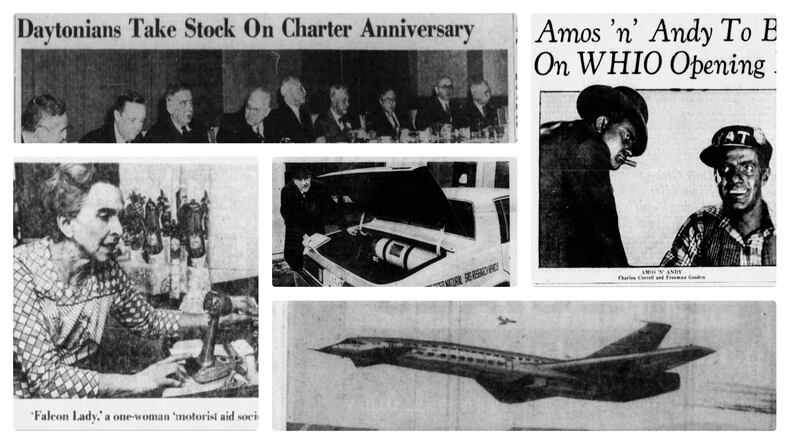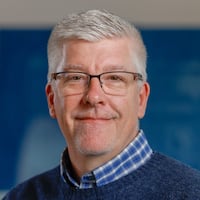Here’s a look at some stories happening the week of Jan. 29-Feb. 4
Jan. 30, 1927: Core of Air Corps will occupy new field in June
It was said that the new Wright field, scheduled to open in June of 1927, would become the most important military spot in the United States. When completed, the field was to be the largest in the world, covering nearly 5,000 acres.
Wright Field would become headquarters for the materiel division of the army air corps. The division is “the heart of the air service, the core of the corps.”
“Materiel” means development, procurement, storage and maintenance of all air corps equipment.
“In time of a national emergency, the eyes of the country will turn to Wright Field,” the Dayton Daily News wrote.
Feb. 3, 1935: Amos ‘n’ Andy to be heard on WHIO opening program
For the first time in five years, “radio’s most popular dialogue team,” Amos ‘n’ Andy, was scheduled to appear on a program other than their regular show to open a new radio station.
WHIO was Cox Radio’s first station started by company founder Ohio Gov. James M. Cox in the Dayton Daily News building downtown, on Ludlow Street. It was set to sign on the air on Feb. 9, 1935.
The pair’s vaudeville engagement in Harrisburg, Pa., was going to be sent over newly installed special lines so they could participate in the inaugural broadcast.
Amos ‘n’ Andy had “never appeared on any network other than the WJZ-Blue network of NBC, during their regular program. It is indeed a tribute to WHIO to have the boys assist in the dedicatory program,” the Dayton Daily News wrote
Feb. 1, 1946: Daytonians take stock on charter Anniversary
More than 100 members of the Dayton District Development committee, which was responsible for establishing a city government and was widely copied throughout the United States, held a meeting in the NCR office auditorium.
Dignitaries of the group included DDDC Chairman Col. E. A. Deeds, Mayor Edward Breen, Orville Wright, Frederick H. Rike and others.
Housing needs of the returning veterans was one item that grabbed the spotlight.
H.H. Webster, executive director of the Veterans Information Center, said 5,510 veterans had visited the center in January. One out of four wanted information on the educational advantages provided in the GI Bill of Rights.
Jan. 4, 1954: Seize Dayton druggist on opium sale charge
Officials arrested a Dayton pharmacist and drugstore proprietor on charges of illegally selling opium. It was the first narcotics arrest of 1954.
Held on a federal warrant was William M. Kander, 42, owner and operator of Kander Drugs. Kander was arrested after selling a quart of paregoric to a federal agent for $10.71.
Addicts generally fell back on paregoric when they found it too difficult to get more powerful drugs — herion, morphine, dilaudid and pantopon. Paregoric could be boiled down to extract almost pure opium, which is then injected into a vein.
A state drug inspector said of Kande’s paregoric sales: “He was selling the stuff like soda-pop.”
Paregoric was a household remedy regularly prescribed to calm children or for teething babies.
Jan. 30, 1966: 2nd class or tops? Airport backers outline ‘choice’
Dayton and Cincinnati’s share of airline passenger travel had been going steadily downhill. One of the means of reversing that trend, some observers said, was a regional jetport.
It was thought that a regional jetport could bring Supersonic Jet Service to southwestern Ohio by the 1970s.
Before the advent of the jet age, approximately 2 percent of all U.S. air passengers boarded planes either at Dayton’s Cox Municipal airport or the Greater Cincinnati airport. Although traffic at the airports was increasing each year, it was not keeping up with the national rate. To reverse the trend, it was suggested that a new two-runway jetport be built on a site midway between Dayton and Cincinnati.
Site suggestions included possible locations in Hamilton/Middletown, Red Lion and Harveysburg.
Jan. 29, 1977: To CB motorists, ‘Falcon Lady’ is voice of Dayton
In 1977, a 57-year old housewife, school cafeteria worker and cosmetics saleswoman called the Falcon Lady was considered the “Voice of Dayton.”
Falcon Lady, whose real name was Kathryn Dunlap, was a one-woman “motorist aid society” who broadcasted on CB radio from her living room from her husband’s CB base station.
Dunlap was said to be famous from coast to coast. Drivers would call in with messages of accidents and traffic issues that she would relay to her listeners over her strong signal.
When her husband, John Dunlap, first bought the CB, she “thought it was the dumbest thing he ever bought, but I changed my mind. It’s one of the best things that ever came out,” she said in a 1977 interview.
Feb. 2, 1982: Cheaper ride? DP&L tests show promise for natural gas-powered cars
Dayton Power and Light Co. tested whether natural gas or electric power would be a better option for vehicles in the early 1980s.
DP&L’s fleet of cars and trucks included 16 experimental vehicles — six electric-powered and 10 that used compressed natural gas.
“On electric vehicles, I guess we learned that there’s a need for more battery technology,” said Louise M. Buden, market research supervisor, at the time. “The concept is really good, but there’s an urgent need for lighter cheaper batteries,”
The company started experiments with electric vehicles in the spring of 1981 to find out how they work and how practical they might be for electric customers in the Dayton area. DP&L had three Electra 007 autos, which were Dodge Omni, and three called Current Fare, which used Ford Fairmont bodies.
The range was “40-50 miles in nice weather” on 1,320 pounds of batteries each.
About the Author








